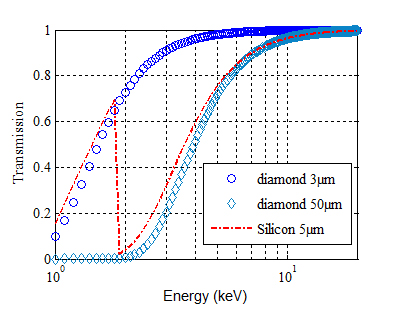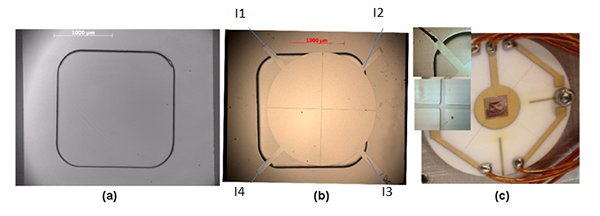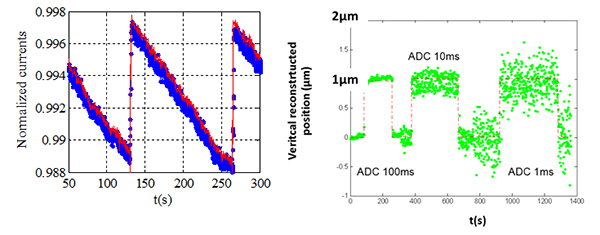Synchrotron radiation beamlines are capable of focusing an X-ray beam to less than ten microns and now even less on long beamlines such as Nanoscopium. These beamlines need to be equipped with quick Diagnosiss to measure both the flux and position of the beam, thus ensuring its stability and the normalization of the data collection with beam intensity.
X-ray Beam Position Monitors (XBPM) have been developed for different synchrotron beamlines throughout the world (Si photodiodes, diffusing sheet detector etc.) and especially at SOLEIL, where the Detectors Group, in collaboration with the CEA LIST Diamond Sensors laboratory, has set up diamond-based XBPMs. These detectors, composed of a 50 micron thick diamond with an active area of about 4mm, are currently being used on hard X-ray beamlines and can resolve the beam position to less than 1µm rms at 1 kHz (cf. SOLEIL Highlights 2012). To meet the specific problem of beamlines using tender X-ray radiation (<5 keV), such as the SIRIUS beamline at SOLEIL, and achieve the same detection performance in this energy range, we have begun to develop ultrathin (3-4 µm) XBPM diamonds (Fig. 1).

Figure 1 : Transmission of a 3µm diamond membrane
A free-standing diamond membrane 3 µm thick was thus created using an argon-oxygen etching technique on a 2mm² surface at the center of a monocrystalline diamond previously polished to 60μm (Figure 2.a). A thin layer of aluminum was deposited on each face of the membrane and a conventional photolithography technique was used to achieve a four-quadrant fine structure (Fig 2b). The diamond detector was then mounted on a ceramic substrate and wired to measure the 4 currents corresponding to the interaction of X-ray radiation with each quadrant of the diamond.

Figure 2 : Free-standing XBPM single crystal CVD Diamond membrane:
(a) 3 µm scCVD Diamond membrane surrounded by 55 µm diamond
(b) Al deposition and photolithography of 4 quadrants
(c) Detector mounted and wired on a ceramic support.
The X-ray intensity is thus calculated using the sum of the four currents and its position in both directions (X and Y) by the reconstruction of the center of gravity.
This detector has been installed and tested on the SIRIUS beamline monochromator output. Current measurements show a charge collection efficiency close to 100% and a diamond detector intensity sensitivity better than 0.02% (Figure 3a, TOP-Up monitoring of the machine). This detector can therefore be used as an absolute photon flux detector.

Figure 3: (a) XBPM intensity measurements and
(b) position tracking
The measured spatial resolution is better than one micron and is illustrated in Figure 3b, which shows the reconstructed beam position following movement of the XBPM by 1µm and sampling rates of 100, 10 and 1ms.
Thus, for the first time, an ultrathin 3 µm diamond XBPM has been installed and meets the needs of the X-tender beamlines. The detector has a resolution of less than one micron with only 3% absorption at 4 keV. This XBPM is very powerful but also very complex and delicate to make. Particular care must be taken in the choice of diamond (internal defects) and the quality of polishing (thickness tolerance < 1µm and parallelism < 0.5 µm).
